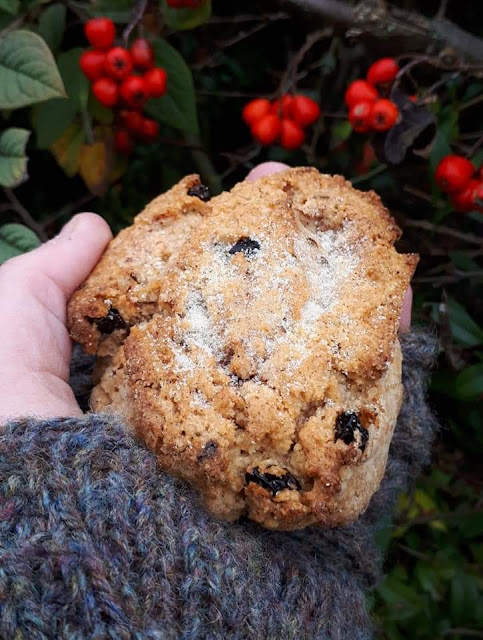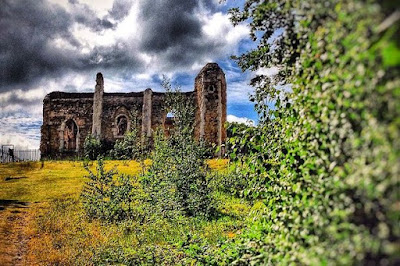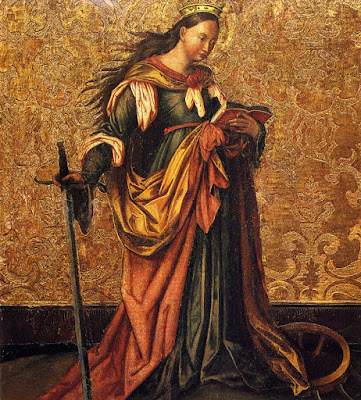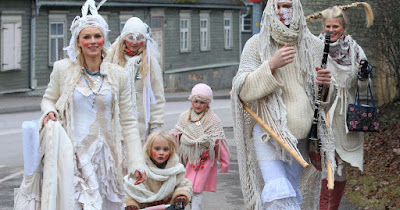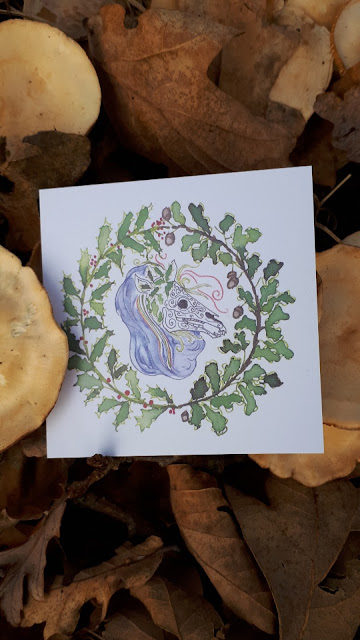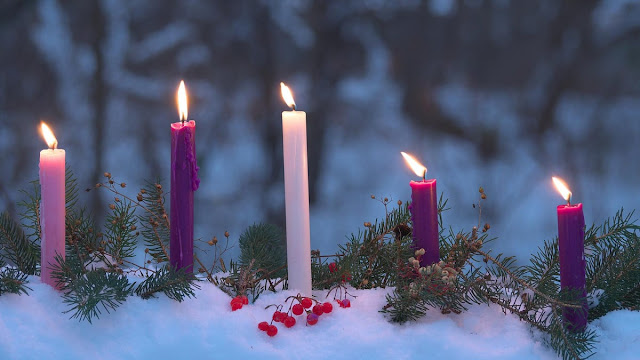 |
| 'Follow the Star' (Virginia Wieringa) |
One of the possible challenges of following Old Advent is that, although we are riding on an ancient tide, we may not feel the sense of shared experience that waiting for the beginning of ‘Church Advent’ with its four traditional Sundays would bring. I like to celebrate both but I very much value the two weeks of sinking into the stillness of the winter dark before the first candle is lit on the Advent Wreath, and I love having the freedom to create my own traditions during this time. It matters so much that we learn to trust ourselves and our own intuition outside the more defined structure of institutional religion. We are waiting for a wilder God, and so we too are invited to find our little fragment of wild.
Nevertheless, it is lovely indeed to have resources to go to on days when we might feel disconnected or uninspired, or when we just feel like settling down with a cup of tea and good company. And I am endlessly curious about the ways in which others weave their own journeys with the sacred. Because of that I have gathered together some resources, both in print and online, that we might choose to explore.
The first book is ‘Celtic Advent: 40 Days of Devotions to Christmas’ by David Cole. A former full-time church minister, David Cole is an international teacher and retreat leader, as well as the Deputy Guardian for the Community of Aidan and Hilda. He writes from the perspective of Celtic Christianity and this book explores the ‘three comings of Christ’, which are believed to have been traditional reflections within the Celtic church in the winter season. These are the incarnation of Christ, the coming of Christ into ourselves in every moment, and the ‘second coming’ as described by the Book of Revelation.

Each day the book offers us a short reflection on a weekly theme, a gentle action, such as a meditation, for example, following the flow of knotwork and swirls on a page from 'The Book of Kells', or questions to ask ourselves, that we might take to deepen our Advent journey. We are also provided with a Bible reading and a short prayer. Many of the days draw their inspiration from the lives of the Celtic saints, who are an endless source of encouragement and delight.
Another book providing daily readings, although not specifically for Advent, is ‘The Celtic Spirit: Daily Meditations for the Turning Year’ by the ever-wonderful Caitlin Matthews; a source of delight throughout the year. Remember, books aren’t just for Advent!
This is a less explicitly Christian book, or not Christian at all, and so would suit those of us who don’t follow that path or like to broaden our spiritual understanding.
We’re told that “using poetry, myths, reflections, rituals, and visualisations, [The Celtic Spirit] leads us on a year-long pilgrimage that will help connect the cycles of your soul to the circle of the seasons...Brimming with the legends and lore of Ireland, Wales, and Scotland, The Celtic Spirit is a brilliant introduction to the sacred wisdom of the Celtic path ~ and a potent resource for daily spiritual renewal.”
Ruth Burgess of the Iona Community has written books covering all the seasons and festivals in the Christian Year. Her ‘Candles and Conifers: Resources for All Saints’ and Advent’ is brimming with good things.
We’re told that, “'Candles and Conifers' is a collection of seasonal resources ~ prayers, liturgies, poems, reflections, sermons, meditations, stories, and responses, written by Iona Community members, associates, friends and others”. It offers resources, both for groups and individuals, from All Saints’ Day to Christmas Eve and includes saints’ days, Remembrance Day, World AIDS Day, and Advent. There is even a cats’ Advent Calendar!
In towns and villages
In tower blocks and terraces
Christ is waiting to be born
In palaces and shanty-towns
In high streets and back-streets
Christ is waiting to be born
In the vastness of the universe
In the intimacy of our hearts
Christ is waiting to be born
Another offering from the Iona Community is ‘Doing December Differently: an Alternative Christmas Handbook’ by one of my favourite authors, Nicola Slee, together with Rosie Miles.
The book “explores how people of faith and goodwill might mark the midwinter season and the Christmas festival with integrity and simplicity. How can we include others and celebrate difference without putting us all under intolerable strain, or perpetuating false and oppressive myths of the idea family life?
Drawing on ancient roots but also minting fresh language, fresh gestures, fresh meanings, what rites, rituals and ceremonies might we use that are meaningful to us today to help us mark out the days and nights of this midwinter season?”
There are chapters on family Christmases, alternative community Christmases, solitary Christmases, Lesbian, Gay, Bisexual and Transgendered Christmases, and non-Christian Christmases, amongst many others. We are provided with historical, liturgical, theological, and sociological perspectives, as well as suggestions for giftgiving and sitting with the midwinter darkness.
There are also suggestions for Advent, such as holding an Advent Tea and some ideas for journeying through Advent with children. I particularly love Nicola Slee’s ‘alternative Advent Calendar’, which includes such sips of honeyed wisdom for our focus each day as, ‘Darkness. Tiredness. Tears’. ‘welcome laughter where it mingles with all things troubled and trembling’, ‘cynic in you, become child again’, ‘teach yourself starry-eyed wonder’, ‘rip up the Round Robin’, and ‘choose justice in place of sadness.’ Amen to all of that!
Next, we have two poetry books; ‘Circle of Grace: a Book of Blessings for the Seasons’ by Jan Richardson and ‘A Star-filled Grace: Worship and prayer resources for Advent, Christmas & Epiphany’ by Rachel Mann.
Jan Richardson’s book is at times almost unbearably beautiful and a great source of comfort and wisdom on the darkest of days. She tells us that, “within the struggle, joy, pain, and delight that attend our life, there is an invisible circle of grace that enfolds and encompasses us in every moment. Blessings help us to perceive this circle of grace, to find our place of belonging within it, and to receive the strength the circle holds for us.”
‘Circle of Grace’ begins with ‘Where the Light Begins: Blessings for Christmas and Advent’ and is a quiet and gentle ally in these long nights of winter;
“...this is what
I can ask for you.
That in the darkness
there be a blessing.
That in the shadows
there be a welcome.
That in the night
you be encompassed
by
the Love that knows
your name."
Anglican priest, broadcaster, and writer, Rachel Mann, “questions the cosy and sentimental view of the festive season and takes seriously the idea that God in Christ is born as a vulnerable outsider who transforms the world in radical ways.”
As well as poems and light and dark, and prayers, liturgies, meditations, plays, and reflections, the book includes a section on ‘voices of Advent & Nativity’ where we can hear the thoughts of Mary, Elisabeth, Joseph, a Roman soldier, a shepherd, an angel, and Herod, amongst many others.
Saw this is the same is a modern, often challenging, take on the Christmas story and so a valuable resource in shaking us out of our well worn and familiar furrows;
“Zecharias (II) ~ excerpt
Luke 1: 57-80
And what is to be learned from silence? What is to be learned from listening to a different voice from the one religion tells you is true? The male voice. The voice of authority. The voice everyone imagined God used in the wilderness to command Moses.
My time in silence has taught me to cherish a different voice. A voice with another kind of authority - ancient, comprehending. A mother's voice perhaps. That knows exactly where all her children have come from. That will not sleep till she knows they are flourishing.
I have been blessed to hear that voice...
I learned to trust the quiet voice of God that does not insist, but waits for us in the silence and gives us our true voice...
For God is faithful. She is the womb of us all."
Rachel Mann’s ‘In the Bleak Midwinter: Through Advent and Christmas with Christina Rossetti’ would also be a thoughtful addition to an Advent bookshelf.
I also heartily recommend anything by new Archbishop of York, Stephen Cottrell, whose writing is warm, accessible, meaningful, and often funny. For this time of year, 'Let it Slow: an Advent Calendar With a Difference' is lovely.
Another printed resource is ‘Making Winter: a Creative Guide for Surviving the Winter Months’ by Emma Mitchell.
This is a beautiful book; certainly not a specifically Advent-related offering but filled with ideas for engaging with the pulse of winter, scattered with lovely photographs taken at Emma’s cottage in the Fens. This gathering of nature-inspired crafts describes 24 projects, including silver jewellery making, paper-crafting, crocheted mittens, foraged infusions, scrumptious recipes, and nature diaries. Just lovely.
Other bookish recommendations are:
Walter Brueggemann, ‘Celebrating Abundance: Devotions for Advent’ and ‘Names for the Messiah: an Advent Study’.
Richard Rohr, ‘Preparing for Christmas: Daily Meditations for Advent’.
Jane Williams, 'The Art of Advent: a Painting a Day from Advent to Epiphany’, which is absolutely lovely!
And one of my absolutely favourite Advent resources, especially for those of us who take our inspiration from nature, is ‘All Creation Waits: the Advent Mystery of New Beginnings’ by Gayle Boss with illustrations by David G. Klein, which includes portraits of twenty-four creatures, such as the black bear, the wild turkey, the little brown bat, the meadow vole, the red fox, and the honeybee, and describes the ways in which their survive the winter knowing that, “the dark is not an end, but a door.”
Although the book is a little difficult to get here in the UK it is available on Kindle or as an audible book and you can hear a little here https://vimeo.com/181256237.
I have also gathered together a list of online resources that might be of interest. I will share more of these when I write about online Advent Calendars in the next week or so. But here are some wonderful ones for now:
The first is the yearly Celtic Advent Calendar from Contemplative Cottage, which can be found at https://contemplativecottage.com/celtic-advent-calendar/.
Christine Sine of ‘GodSpaceLight’ has been celebrating and writing about Celtic Advent for many years. You can read her reflections here https://godspacelight.com/2018/11/14/welcome-to-celtic-advent-set-your-heart-in-the-right-direction/ and she has also created a rather wonderful Spotify playlist for the Advent season here https://open.spotify.com/playlist/177C7QIoOAwHkY0bAjU87S?si=M92QFRasTTK-Wz1tS48IbA
Further sharings at GodSpaceLight which might be of interest can be found at https://godspacelight.com/2020/11/16/meditation-monday-the-light-is-coming/, and https://godspacelight.com/2020/11/14/taize-style-contemplative-service-for-november-15-2020/
https://godspacelight.com/2021/11/15/waiting-with-expectant-hearts/
https://godspacelight.com/2021/11/15/meditation-monday-welcome-to-celtic-advent-once-more/
and here is another helpful resource list https://godspacelight.com/2016/07/06/celtic-resource-list-updated-for-2016/
Christine can also be found on Twitter @ChristineSine where she shares posts on the #CelticAdvent hashtag.
John Birch at Faith & Worship also provides some beautiful Celtic-style prayers and worship resources for the seasons. His Advent offerings can be found at https://www.faithandworship.com/#gsc.tab=0
Rev. Brenda Warren has provided a tremendous resource, 'Celts to the Creche', which provides a Celtic or Anglo-Saxon Saint for every day of Celtic (Old) Advent. You can find it here https://saintsbridge.org/
24-7 Prayer Scotland are also following Celtic Advent and have shared a blog about it here https://24-7scotland.com/songs-in-the-wasteland-birdsong/.
They have also been sharing the most beautiful Celtic Advent prayers on Twitter via @247PrayerScot;
‘We have waited long for You.
Deep has been the darkness...
We will not fear the shadows that surround us
if only You will come among us!
We await the sound of a cry in the night,
the joy that follows pain,
the coming of hope.’
- from Celtic Daily Prayer, Book Two
I will end with some wonderful Celtic Advent sharings from Tadhg Jonathan, whose writings can be found at https://tadhgtalks.me/2017/11/04/celtic-advent-cosmic-thoughts-at-the-cafe/,https://tadhgtalks.me/2019/11/14/celtic-advent-even-more-cosmic-thoughts-at-the-magic-cafe, and https://tadhgtalks.me/2016/11/16/ephemera-its-time-to-celebrate-the-first-day-of-the-celtic-advent-season/
There really are so many resources that we could choose to dive into, and of course our challenge then is not to replace the busyness of a manic Christmas season with an equally busy Old Advent, as we try to take in far too much information. But it is also helpful to have a gathering place for such things just in case we do need them. I love all of these resources and often get out all my books and open web pages in readiness for Old Advent to begin, and then I go for a walk along the hedgerow instead. May our journeys always be led by our own deepening awareness of the beauty held in the darkness.
May this eternal truth be always on our hearts,
that the God who breathed this world into being,
placed stars into the heavens,
and designed a butterfly’s wing,
Is the God who entrusted his life
to the care of ordinary people.
[He] became vulnerable that we might know
how strong is the power of Love.
A mystery so deep it is impossible to grasp,
a mystery so beautiful it is impossible to ignore.
(Poem/prayer: John Birch, http://www.faithandworship.com used Under Creative Commons Licence)

